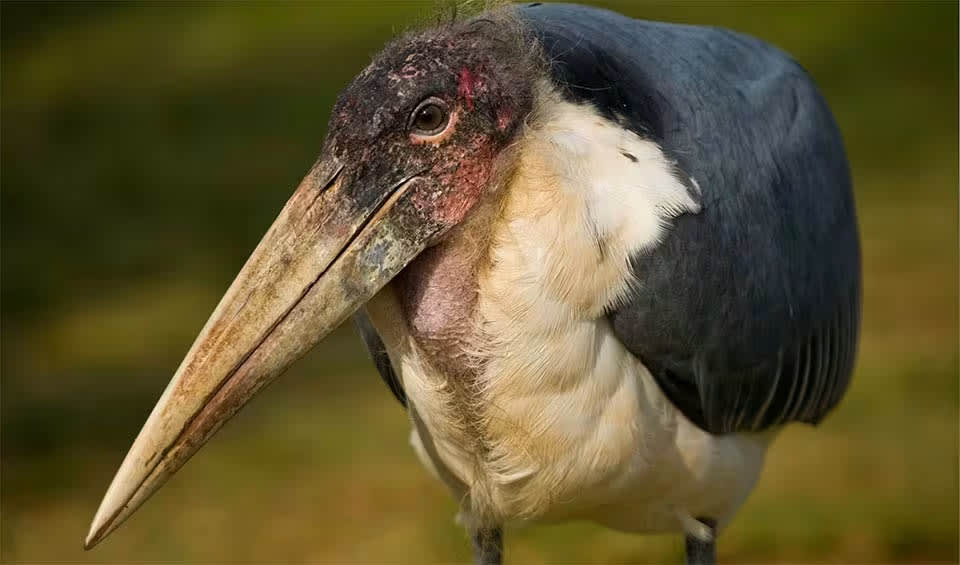A large member of the stork family that is easily identifiable by its size, bald head, and the prominent gular sac located at its neck. This bird has a somewhat prehistoric appearance, with a heavy bill and a wingspan that can reach up to 2.6 meters (8.5 feet), making it one of the largest winged birds.
Found throughout sub-Saharan Africa, the Marabou Stork inhabits a range of environments, from arid savannas to lakeshores and riverbanks. It is not uncommon to find these birds in urban areas, foraging at landfills, which have become an important food source for them, especially on the outskirts of cities and towns.
The Marabou Stork’s diet is impressively diverse. These opportunistic feeders consume everything from termites, locusts, and other large insects to fish, frogs, snakes, rodents, and even small birds. Their dietary flexibility includes scavenging for carrion and feeding on the carcasses of dead animals, which plays a crucial role in their ecosystems by preventing the spread of disease.
The appearance of the Marabou Stork is unmistakable: a dark grey to black body, a white belly, and a featherless pinkish to reddish head and neck, which are thought to be adaptations for their scavenging lifestyle, as a lack of feathers in these areas prevents blood and other substances from soiling their plumage during feeding.
Distribution
 Angola
Angola Benin
Benin Botswana
Botswana Burkina Faso
Burkina Faso Burundi
Burundi Cameroon
Cameroon Central Af. Rep.
Central Af. Rep. Chad
Chad Congo-Brazzaville
Congo-Brazzaville Côte D’ivoire
Côte D’ivoire DR Congo (Kinshasa)
DR Congo (Kinshasa) Djibouti
Djibouti Eritrea
Eritrea Eswatini
Eswatini Ethiopia
Ethiopia Gabon
Gabon Gambia
Gambia Ghana
Ghana Guinea-Bissau
Guinea-Bissau Guinea
Guinea Israel
Israel Kenya
Kenya Liberia
Liberia Malawi
Malawi Mali
Mali Mauritania
Mauritania Mozambique
Mozambique Namibia
Namibia Niger
Niger Nigeria
Nigeria Rwanda
Rwanda Senegal
Senegal Sierra Leone
Sierra Leone Somalia
Somalia South Africa
South Africa South Sudan
South Sudan Spain
Spain Sudan
Sudan Tanzania
Tanzania Togo
Togo Uganda
Uganda Zambia
Zambia Zimbabwe
ZimbabweDid you know?
- Gular sacs are multifunctional and are used for making sounds, thermoregulation, showing dominance and are inflatable.
- Ringed Marabous are seen in Spain, which is further south dispersion from their geographic range.
- The draping black wings & huge size make it looks like a grim reaper in the real world from where the name originates undertaker bird.
- This huge bird can fly gracefully (high up to 13,000 feet), thanks to those hollow leg and toe bones.
- They literally eat anything that they can swallow.
Anything we've missed?
Help us improve this page by suggesting edits. Glory never dies!
Suggest an editGet to know me
Terrestrial / Aquatic
Altricial / Precocial
Polygamous / Monogamous
Dimorphic (size) / Monomorphic
Active: Diurnal / Nocturnal
Social behavior: Solitary / Pack / Herd / Colony
Diet: Carnivore / Herbivore / Omnivore / Piscivorous / Insectivore
Migratory: Yes / No
Domesticated: Yes / No
Dangerous: Yes / No





